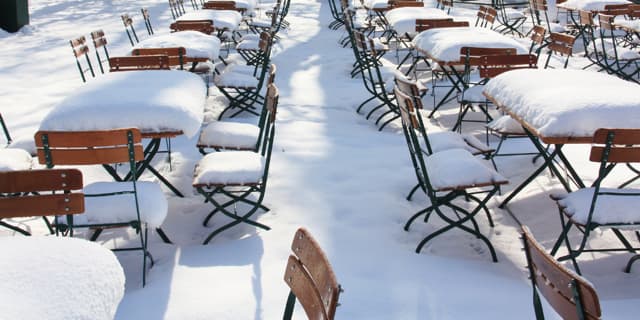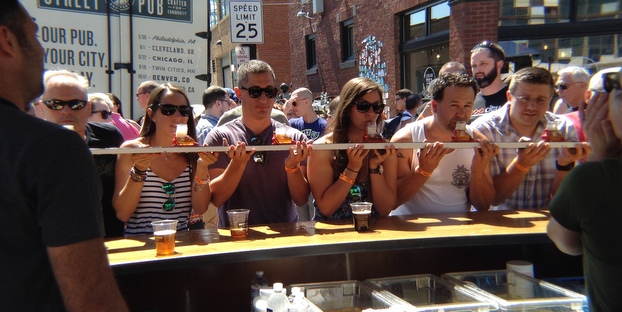
Fire pits, space heaters, tents, snow domes, greenhouses, and blankets. No doubt that all of these things have been on your radar for the upcoming colder COVID months. But in addition to planning for how to physically serve your fans this winter, you also need to think about how to winterize your business plans as well.
Last spring, our industry didn’t have the luxury of knowing what the market would look like under COVID-19 related restrictions. There are still a host of uncertainties we will face this winter when it comes to market challenges, but at least we have a better idea of what kind of pivots might be necessary to keep our craft beer businesses up and running.
In addition to winterizing your outdoor drinking spaces and keeping fans warm, you also need to be making plans to keep sales coming in and connections going with your fans. Here are some ways that you can start preparing your business structure for the colder months.
First, know your numbers – your cost of goods sold, your breakeven points, your sales goals for the rest of 2020, and well into 2021, your marketing budget, your product mix, and overhead costs. Have a solid system in place for tracking expenses and beer sales.
Sales tracking should include what you’re selling out of your taproom, merchandise sales, and what’s being sold in the wholesale channel. If you’re selling beer off-site to accounts, know who’s buying your beer, what they are buying, and how often they place orders. In creating sales projections for 2021, don’t be afraid to reference sales data from 2019 or 2018 to hone in on your annual goals.
Last year was not normal, but if you can identify historical sales patterns you should be able to properly project your volume and distribution goals for the upcoming sales year. You should also be paying attention to consumer purchasing trends and market data. Organizations like the IWSR, Nielsen, the Brewers Association and IRI provide insights into consumer behavior that can help you formulate sales plans based on what fans are buying and where they are spending their money.
Second, know how to manipulate your sales data to make plans for restricted market conditions. Dig into your sales volume and distribution metrics to figure out what’s working and what’s not working. Focus on market segments, like convenience stores and grocery chains, that are showing the most growth during hard times. Consolidate your item selection to your best sellers to save on production costs.
Focus attention on your most loyal retail customers to maintain consistent product orders, but also make plans to acquire as much new business as possible to balance out any losses. And make sure that you’ve got online revenue streams in place just in case your taproom has to shutter in-person drinking completely.
Third, be aware that everything is different. Our beer market is different, buyers are different, consumers are different, and so your sales are going to look different. You might have to completely alter your sales plans that you’ve been following for years.
If you’re a brewery sales rep, you might have to change your sales tactics and the way that you speak with buyers out in the market. If you never planned to package your beer, you might have to look into package options if in-person drinking is not an option.
Finally, you’ve got to get your digital marketing plans in order. If we get into a situation again where in-person drinking and dining is prohibited, you need to have a digital contingency plan. Your website needs to be consistently updated with any changes in operating hours, and should include ways to buy your beer, an online store, delivery options (if applicable), email list sign up forms, social media links, and pictures of everything you sell.
When communication is limited or reserved to the virtual world, you’ve got to digitally explain everything in order to maintain connections with consumers. Small things like the photos and videos on your website or in your social media campaigns need to be sales-driven. Sales-driven media means that you’re encouraging a purchase decision in the consumer’s mind. So instead of showing consumers beer tanks, show a taproom full of happy socially distanced patrons enjoying your products or instead of a single can shot, show them what the product looks like in a glass to make them thirsty.
You can influence purchase behavior by providing sensory cues in your media, so make sure that every image counts. In times of crisis, it’s also important to humanize your brand and maintain consistent communication with fans. Set yourself up with tools, like email marketing and loyalty programs, to encourage patronage and keep sales positive. And finally, don’t drop the ball on e-commerce. Make sure that you have an online store up and running prior to hard times, otherwise you’ll be left behind by your competition.
Julie Rhodes is the owner of Not Your Hobby Marketing Solutions, the only educational service company built for the craft beverage industry that teaches you how to take the guesswork out of your sales, marketing, and distribution plans. Follow along on FB and IG @notyourhobbymarketing or book a call with her to discuss customized consulting services tailored for your beer brand.






Leave a Reply
You must be logged in to post a comment.